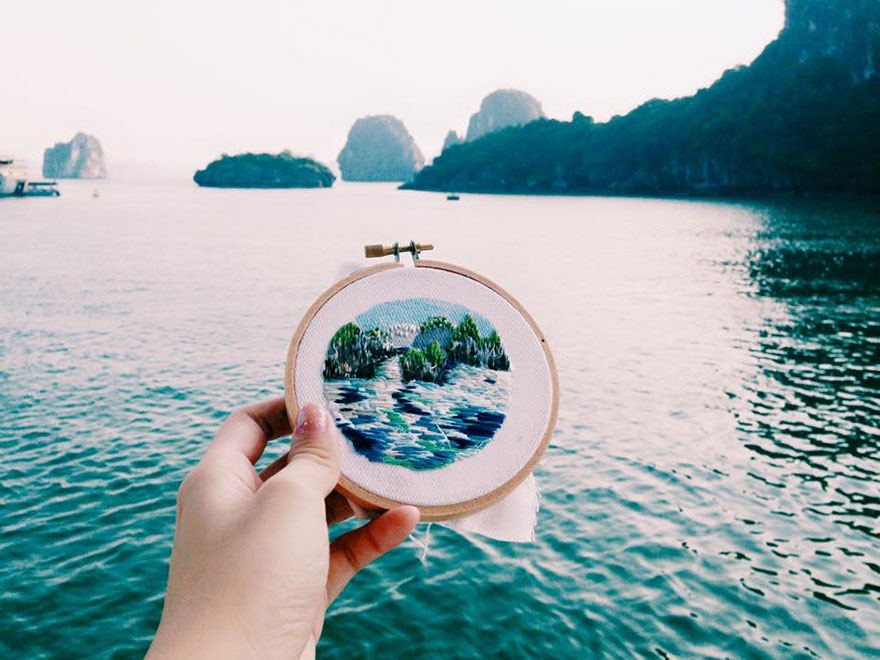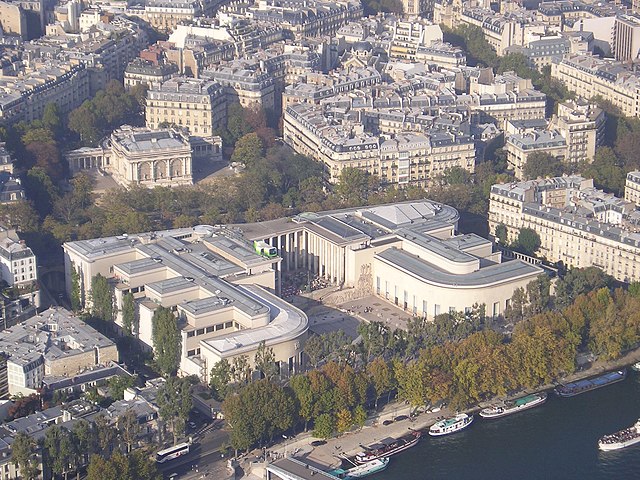The email landed in my inbox shortly after I
launched my thread painting website. It carried an address from
someone in Australia calling herself “needlepainter.” I dithered. Was this skulduggery, spam or fan mail from a kindred spirit? Protection software pronounced it safe to open.
I was right about Australia and kindred spirit. But this missive wasn't spam or fan
mail either. Nor was it from a woman.
Jerome Speekman, an Ozzie embroiderer, was announcing
a trip to the Netherlands and offering to teach needlepainting to “my students”.
He enclosed photos of his work. It was
astoundingly colorful, vibrant and big!
 |
| Jerome Speekman with "No Sunshine" |
Sadly, I had no students for Jerome, but
intrigued by his embroideries. I suggested we meet for a coffee when he was in
Amsterdam. And so we did, in a café near the Stedelijk Museum six months later.
I
brought along my latest portrait project, still on its hoop. Jerome brought his
Dutch sister and his Australian wife and daughter, as well as his latest piece
scrunched up in a calico bag. While the women talked among themselves over cappuccinos, Jerome
and I put our heads together to discuss materials, techniques, subject matter,
and life. The conversation flowed as
with female embroiderers I have met.
Jerome does not do “pretty” or “dainty” work.
He creates bold pieces, often over a metre long. Sometimes he stitches free
hand and then tacks a finished work onto painter’s stretcher bars. Other times
he embroiders directly onto pre-stretched material. His work is meant to hang
on walls, unframed. They can hold their own against paintings or photographs.
.JPG) |
| Lizard Island |
.jpg) |
| Early Morning |
(1).JPG) |
| Middle of the day |
The lush countryside near his New South Wales home
is Jerome’s inspirations. He stitches its native birds, animals and flowers. He
depicts majestic the forests that make humans insignificant. He stitches people.
Alternatively, he can reach into his fantasy to create blue-skinned woodland
spirits playing among gnarled branches of giant trees. Then there are two
canvases of suicide bombers. This is a shocking subject to be sure, but there
no blood or gore. It is just Jerome’s way of pushing the boundaries of artistic
perspective and embroidery convention!
.jpg) |
| Explosion |
Jerome is an auto-didact with a life story as
colorful as his work. Born in Amsterdam in 1950, he tried several schools
before becoming a cadet at the Lagere Zeevaartschool, the merchant marine high
school. At 15, he sailed on the Pollux, the school’s triple-mast training ship, to Australia, only
to fall out of love with the sea and in love with the country. By 19, he
emigrated Down Under on his own.
“I have
had a range of jobs in a variety of fields,” he explained, “from fruit picking
to a senior project officer with an unemployment schemes.” For the past 15 years,
Jerome has been a partner in a computer shop. He also experiments with
recordings, videos and animation. He had done wood carvings too. However,
embroidery remains a constant in his life.
“Embroidery is a clean form of art with very
little mess that pollutes. I can carry whatever I need in a bag. Some cotton
and a needle is all I need.” And that
was so. To my amazement, the needle painting that Jerome pulled from his bag to
show me was worked free hand and on aida-cloth in multiple strands of cotton
thread. His long-short stitching was not “refined.” Did that matter? The
interplay of color, movement, and theme were captivating. Van Gogh did not
paint neatly either! And Jerome’s work had Van Gogh rawness about it. Here was
an embroiderer that I could learn something from: “Just go for it. It’s the
image’s effect not the stitches that matter.”
How did Jerome come to embroidery? “I started
in 1980. My [first] wife embroidered now and then. The colors that spilled out
of her basked were so beautiful. I had to use the blue—lapis lazuli. My first
work was a comet’s tail inspired by Immanuel Velikovsky’s book, which
correlated myths and legends with catastrophic celestial events.”
Jerome stitched his comet onto a jacket, which
he often wore. “So many ladies would stop in the street whenever I wore it,
exclaiming that my work was amazing and that I was a “master.” It encouraged me
so to go from clothing onto wall hangings.” Jerome has had a number of private commissions
since.
“Yes, I’ve had some funny reactions to being a
male embroiderer,” says Jerome when I asked him if his passion for thread art
generates comment. The most memorable involved the police back in the days when
his now short white hair was brown and shoulder length. “I was hitch-hiking. Two
detectives stopped their patrol car with screech. They wanted to search my bag.
They asked, ‘What have you got in the bag, darling.’
‘ Embroidery,’ I said. They both took a step backwards. So I
showed them my embroidery from a distance. They liked it and left, never
bothering to look further.” I don’t
ask what else they might have found.
 |
| 999 Pelicans |
Since that first meeting, Jerome and I have
trade emails discussing projects and techniques. He sends photos of the
great Australian outdoors with its forests, beaches at sunset, and big skies.
And there are updates on his wife and his two-year-old granddaughter.
Jerome’s latest piece “999 Pelicans” is
fascinating. The flock covers the whole canvas becoming an abstraction as the
individuals’ bodies merge into patches of orange and white. This piece Jerome
has stitched on linen, a material I suggested he might find easier to work on.
What
next? Depends on what takes his fancy. A love of stitching coupled with a vivid
imagination propels him into the future. Stitching is his obsession. That and
his granddaughter.





.JPG)
.jpg)
(1).JPG)
.jpg)



